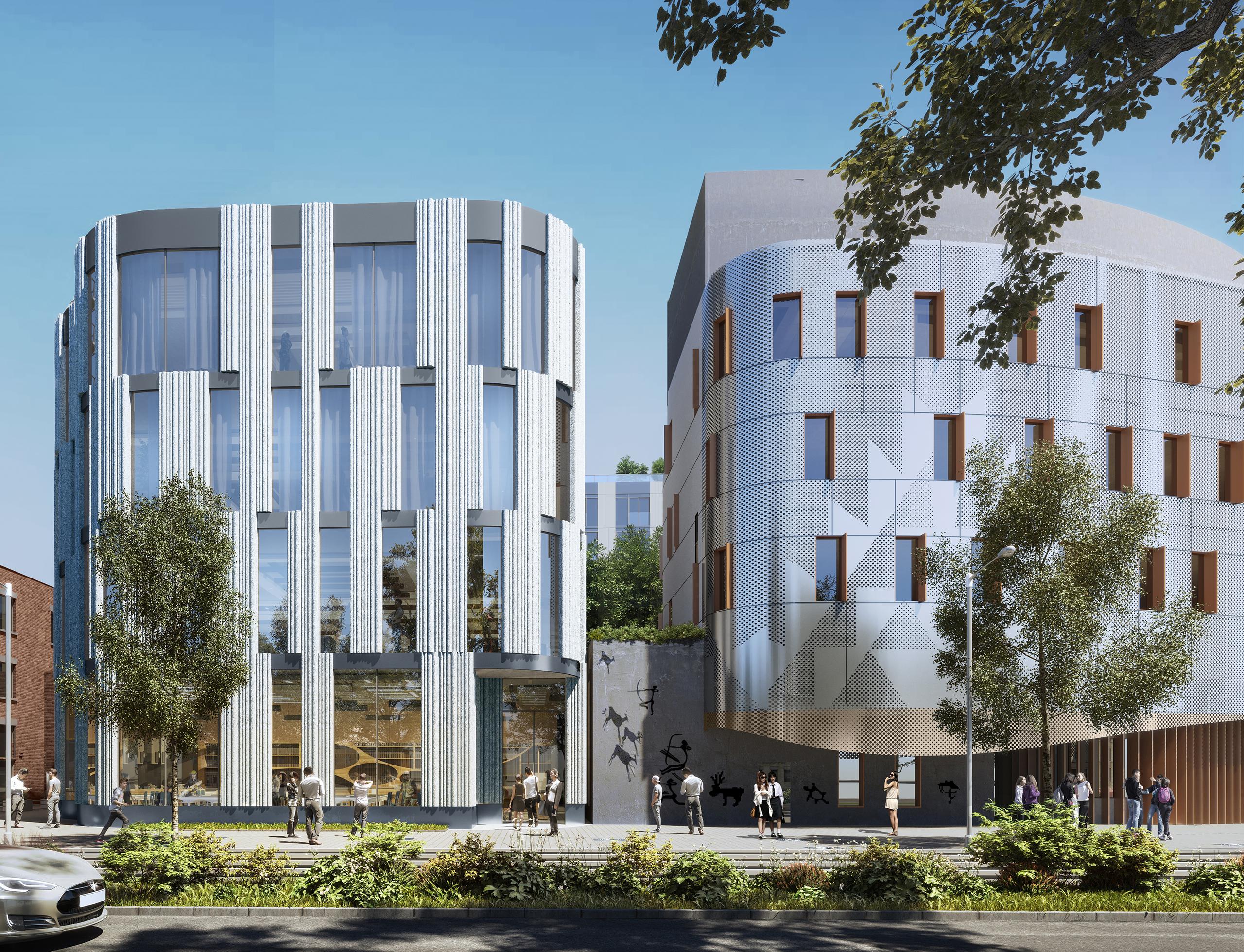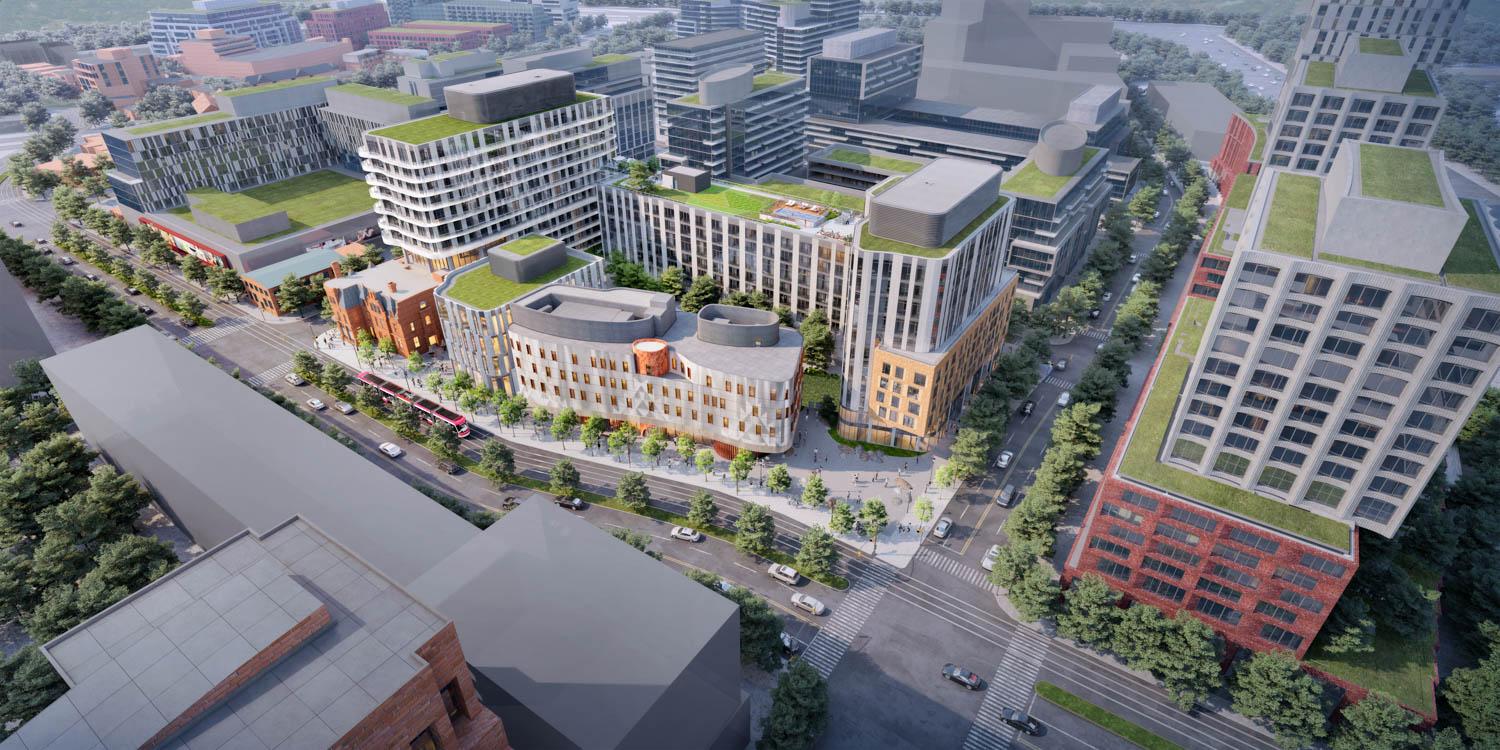I am writing this on the day of yet another announcement about the discovery of unmarked graves at residential schools. Truth is in the air and change is rolling in; the way we work is ready for change too.
Last year we joined the design team charged with the creation of a new Indigenous Training, Education and Employment Centre at the Indigenous Hub, which includes workshops and classrooms for training in construction and to assist in the completion of high school, as well as a children’s daycare and EarlyOn, a centre for parents and kids. Miziwe Biik and the City of Toronto are our clients. The double hurdles of virtual meetings and cultural difference were eased by working with Two Row Architects as our Indigenous design consultant and Miziwe Biik’s consultant artist, Joseph Sagaj; their role was to guide our design, flag areas of sensitivity and to be a bridge across cultures. They have graciously educated us where needed and at times offered hints of information that are just enough to require of us reciprocal curiosity, engagement and self-education.

Clan symbols by Indigenous artist Joseph Sagaj
Typically when working with clients, my “quarterback” style of managing meetings and process has worked well. Both efficiency and diplomacy have a place, but ultimately we have a building to make and that building has a schedule to adhere to. Efficiency calls the plays. Acting as prime consultants, we advise, direct, control and deliver. But that was not our place on this project. Yes, we could advise on technical issues, but we could not ask this client to bend to any “tried-and-true” design process. We were the experts on construction, but the students of Indigenous ways of being and knowing. This change of roles has made me question if the tried-and-true design method is ever appropriate. Just as the benefits of accessible environments accrue to everyone, the practice of listening and learning first suits every project.
Early on, we had some design success: a beautiful concept was emerging. However, we had not yet challenged our assumptions ourselves or had our assumptions challenged by our clients. Some months into developing the design, and very close to a deadline, we received a carefully worded letter outlining many aspects of concern about what we had proposed. During early meetings we mistook silence for agreement: a cultural assumption about who leads and how decisions get made. In a timely manner and only once was not the correct answer. Indeed, the process would take more consideration and many more iterations.

We slowed down. We questioned the assumptions of our design process. We heard personal histories about regalia and beaded cradleboards and birchbark scrapings. We were opened up to the potential of clan symbols to foster belonging within a place. We progressed because we got curious when our clients told us that “there isn’t an Indigenous spirit here” and diverged from our usual ways.
During this process, the intangible has had a much greater say: design cannot embody core Indigenous values if spirituality and symbolism are ignored. Connection to land, place, flora and fauna is essential. As designers, our usual role is to represent our client’s brand and vision in built form. When working with cultural symbols, our role is not to represent (or by extension appropriate), but to use our tools to make space for others. In this building, Indigenous artists will be commissioned to craft all cultural representation, for which our building design can only provide the platform.
The process has been much more like a series of conversations rather than meetings; meetings have outcomes whereas conversations cover a lot of ground, sometimes without direction. Better design is made this way. It is carefully woven, integrated and meaningful. And this excites us.
